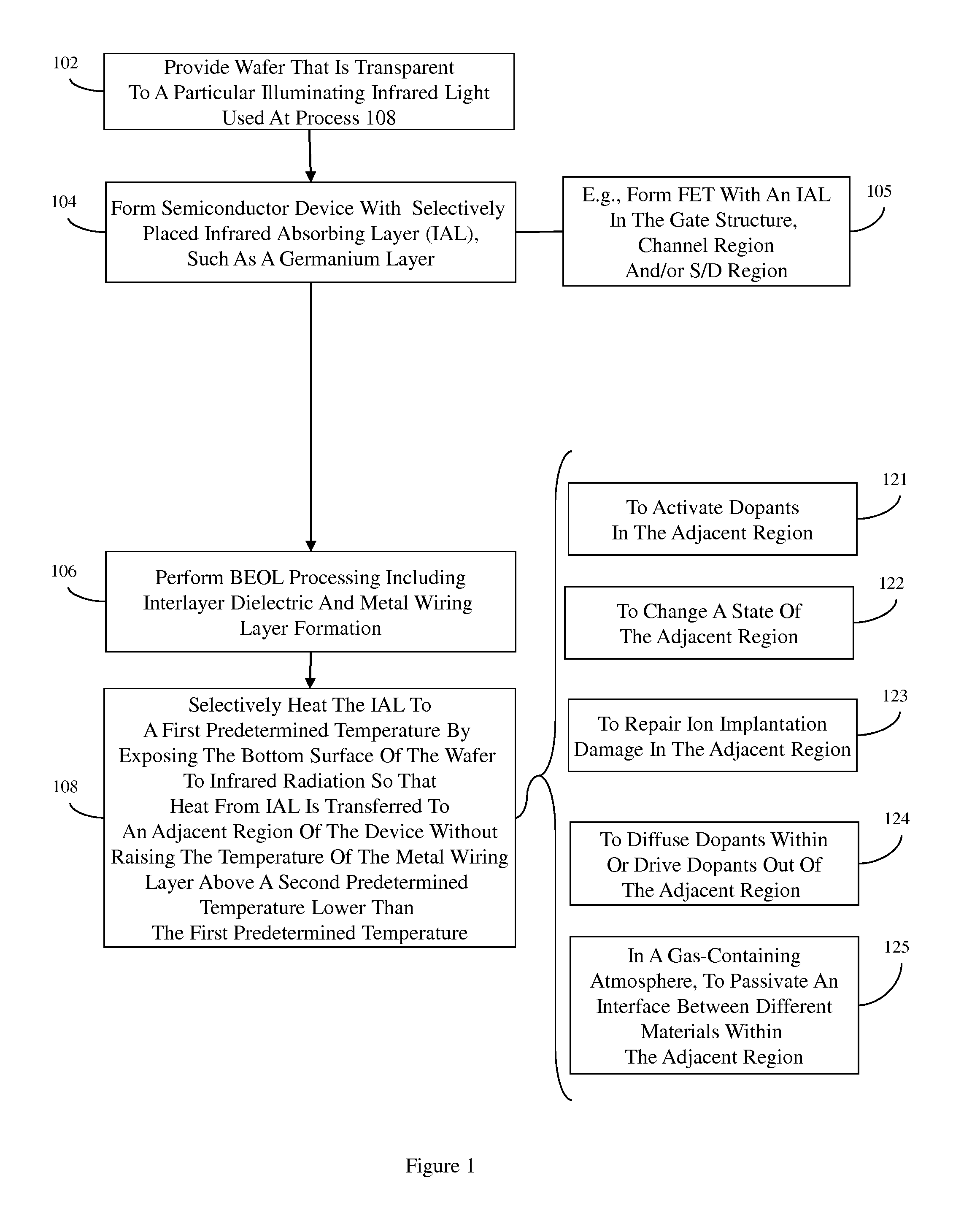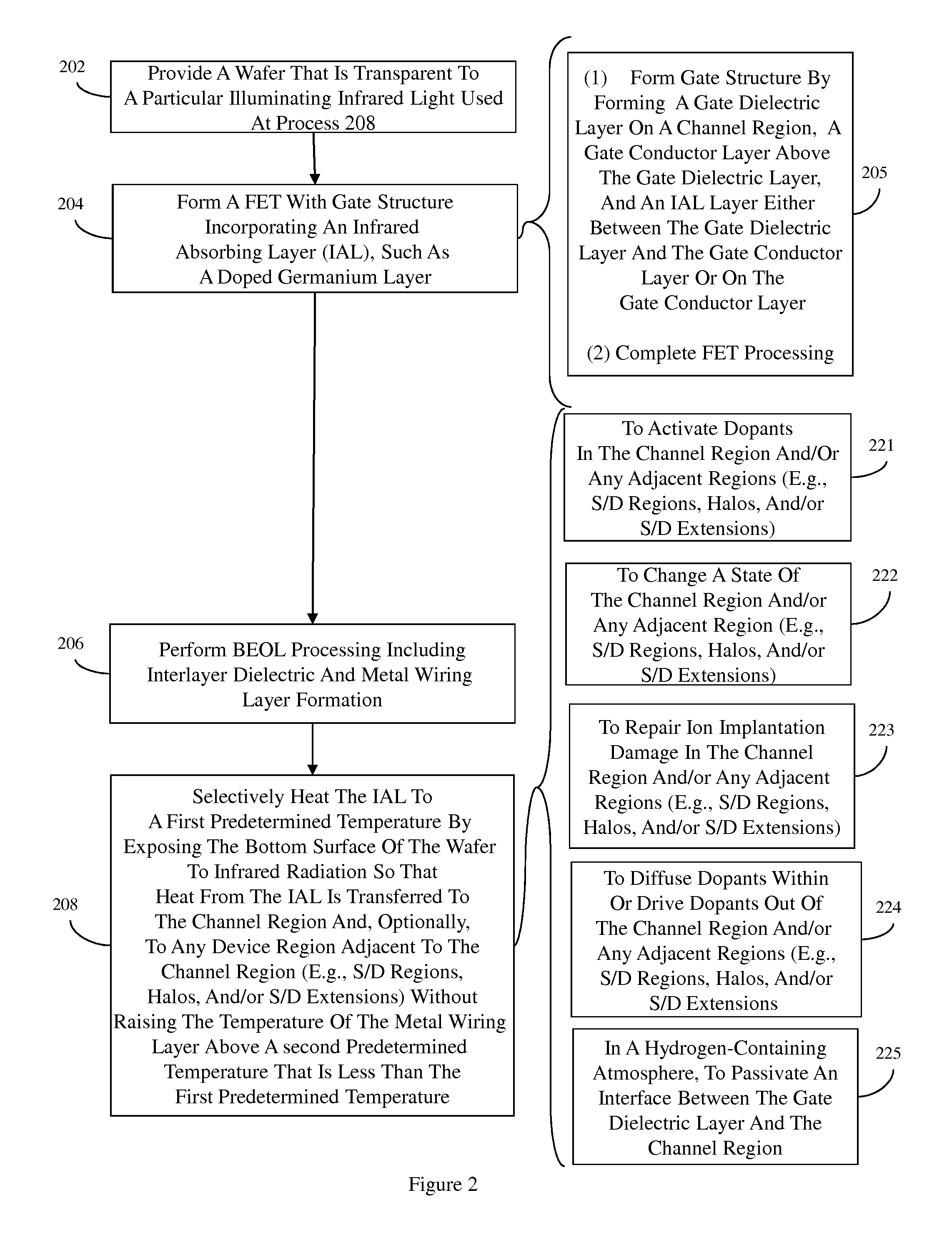Semiconductor wafer processing method that allows device regions to be selectively annealed following back end of the line (BEOL) metal wiring layer formation
a technology of semiconductor wafers and device regions, applied in the direction of semiconductor devices, electrical equipment, transistors, etc., can solve the problems of affecting performance and reducing the reliability of metal wiring
- Summary
- Abstract
- Description
- Claims
- Application Information
AI Technical Summary
Benefits of technology
Problems solved by technology
Method used
Image
Examples
Embodiment Construction
[0024]The embodiments of the invention and the various features and advantageous details thereof are explained more fully with reference to the non-limiting embodiments that are illustrated in the accompanying drawings and detailed in the following description.
[0025]As mentioned above, thermal anneals are often performed during middle of the line (MOL) semiconductor wafer processing in order to repair damage caused by the implantation of dopants (e.g., source / drain dopants), to diffuse or drive dopants, to activate those dopants, to change the state of semiconductor material (e.g., to crystallize or recrystallize semiconductor material), etc. Thermal anneals can also be used to passivate an interface between different materials (e.g., an interface between a semiconductor layer and a dielectric layer), when performed in the presence of a gas, such as hydrogen. It would be advantageous to be able to perform a thermal anneal following back end of the line (BEOL) metal wiring layer form...
PUM
 Login to View More
Login to View More Abstract
Description
Claims
Application Information
 Login to View More
Login to View More - R&D
- Intellectual Property
- Life Sciences
- Materials
- Tech Scout
- Unparalleled Data Quality
- Higher Quality Content
- 60% Fewer Hallucinations
Browse by: Latest US Patents, China's latest patents, Technical Efficacy Thesaurus, Application Domain, Technology Topic, Popular Technical Reports.
© 2025 PatSnap. All rights reserved.Legal|Privacy policy|Modern Slavery Act Transparency Statement|Sitemap|About US| Contact US: help@patsnap.com



